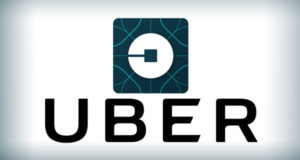Uber: Who is their customer? – Queens of Disaggregation
Continuing from last week, let us examine this week, the business model of Uber; the Alibaba of Taxi Service.

People call Uber an aggregator but I believe they did “disaggregate” the business model first. Well let us see how they could make it possible?
Let us examine the disruption they brought about to the existing business model.
- They disaggregated Location from Taxi Service Provider: Before they came on, if you needed Taxi, either you needed to prebook your ride with a local service provider catering to your area or take a chance with the public taxis and hail a ride as you reached the road or reached predesignated taxi stands. But after they came on, you do not worry about the area, the provider who caters to the area or the predesignated spots. You can request for the cab to come to you.
- They disaggregated Time schedules for Drivers from Service Providers: Drivers can now choose to be available at any time of the day for service. They do not need to settle schedules with the local providers, they no longer need to negotiate schedules or work longer than they want. And Uber did this by aggregating the service to a much bigger level. They offer reliable service by creating a super service with much bigger pool that they can work on unlike a taxi service provider who has access to limited people and vehicles.
- They disaggregated Reputation from a single taxi ride: You do not know the taxi driver, you do not know the car, you are going to have a first ride and may be the only ride in your life time in this car and with this driver. But you do not have to rely upon your own experience to know the reputation of the driver. And likewise, the driver does not have to rely upon his own sense of whether he / she should offer you a ride. They aggregate driver experiences and user experiences to offer you a historical data to base your trust on. So even if it is single ride in a lifetime for both of you, it adds to your reputation and hence you behave your best.
- They disaggregated Vehicles from inefficient Loops: Before Uber, the service providers had to take into factor, the empty returns, as they did not know if they will get a paid ride back. Now as the area for operation is not limited and you can just work in any area, the return is not going to be empty, so utilization can be better and pricing for users cheaper but for drivers are still cost effective. Everyone Wins.
- They disaggregated Payment from a single transaction: Drivers do not have to worry about payment and users have a secure way of paying, no need to carry cash and you can get e-invoice on email and sometimes you do not even need to bill for the official use, your company can tie up with Uber and you may be able to use your corporate card for payments without the need for receipts for settling your bills.
Well I could go on, but the point is, they used software to create a unique platform where they could aggregate the service to carry out the transformation to the experience of the users and providers. In fact, the drivers, the cars as well as the “Driven” are all customers of Uber or let us just say that they have created a platform where all concerned have a unique experience for everyone and all are being benefited.
Next week we will examine another sector which is quite similar in its approach so stay tuned.